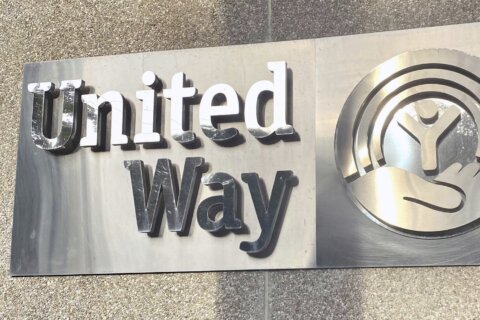It’s not clear if it’s inflation, seasonal price fluctuations, the supply chain, or maybe all three, but D.C.-area nonprofits say they are dealing with the same issues that everyone is facing at the grocery store: higher prices for basic foods.
Radha Muthiah, CEO of the Capital Area Food Bank, said, “Prices are much higher now than they were a few months ago.” Among the biggest jumps, the cost of proteins, meats and canned tuna, for example. Those cost 10% to 30% more in some cases, she said.
Muthiah says her organization has been able to blunt the effects of the spike in prices somewhat, thanks to a long-standing practice of buying large quantities well in advance of when they’re needed.
“During the summertime — July and August — we’re thinking about cranberry sauce and turkey and stuffing,” so the recent price jumps haven’t had an impact on holiday meal plans, Muthiah said.
But hunger doesn’t take a holiday, and the Capital Area Food Bank helps people eat well all year long.
“We are very focused on nutritionally balanced foods for our clients. We are just having to absorb some of these higher prices that are present at this point in time,” she said.
Heather Bruskin, CEO of the Montgomery County Food Council, which works on hunger, sustainable food production and cutting food waste, said she’s seeing some of the same price hikes as well, with staples costing from 10% to 15% more.
Bruskin’s organization works closely with an advisory board whose members have been or are currently enrolled in federal programs, such as SNAP or WIC. Many are finding it increasingly challenging to stretch their budgets to keep foods with high nutritional value on the table.
Bruskin said it’s hard to know how much of the price spike in basic necessities is the direct result of inflation versus the supply chain, but the impact is clear: “It’s definitely causing a direct impact on many of our residents.”
Another impact, and one that may be related to the strain on the nation’s supply chain, Bruskin said, is the inability of some of the region’s diverse communities to find familiar foods. “Many of our residents will be looking for products that may not be available in all grocery stores and that can be a challenge as well.”
It’s not just the increase in food costs that is having an impact on nonprofits. Getting food shipments to recipients means there are transportation costs, and Muthia said, “Because the price of gas has gone up so much, we’re seeing up to a 30% increase in the price of transportation, as well.”
Jenna Umbriac, director of Programs at Manna Food Center in Montgomery County, said her organization has its own fleet of trucks, but has hit a transportation snag. “Parts for our trucks have been virtually impossible to come by, so we’ve actually had to rent vehicles.”
There is one strategy that’s helping Manna Food Center avoid higher food costs. “We have a farm to food bank program where we’re actually purchasing local vegetables grown by over 30 farmers” said Umbria. Manna is also able to get access to eggs and meat through program that links the food bank to local farmers.
“It’s one way that we’ve continued to be able to support the community with the foods that we want and not be so impacted by the national fluctuations in food pricing that we’re seeing,” Umbria said.








